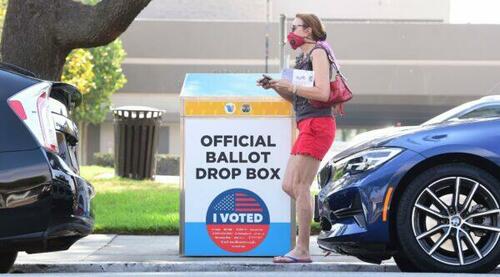Nearly 3,000 people were murdered on 9/11 by terrorists who entered the United States. Immediately, our government took action to prevent future attacks and protect Americans. We tightened security. We put checkpoints in our airports – and we began special screening procedures for people entering America from overseas. We changed our cockpit access. We created "no fly" lists. We didn’t just sit there and hope that the threat would go away.
After COVID-19 surfaced in January 2020, it was quickly apparent that our nation was again under attack, very much like that sunny Tuesday morning in September 2001. Except that this time the culprit was a virus from abroad. To respond, our government – and governments around the world – took similar decisive action to slow the spread. The United States and other nations temporarily closed their borders and restricted international travel until we could fully identify the problem and get this enemy under control. When travel reopened, we created new checks and tests to try to prevent infections from overwhelming our health care systems, until we had treatment options and a less lethal form of the coronavirus.
Yet when it comes to a third enemy coming from abroad, one that killed more than 71,000 Americans last year – many of them young people – our government is relying on outdated tactics and old ideas.
I am talking about the fentanyl crisis, which is killing 195 Americans a day – one of those is country singer Luke Bell, who recently died of an accidental fentanyl overdose.
Fentanyl is a synthetic opioid that is 50 times stronger than heroin and up to 100 times more potent than morphine, according to the U.S. Centers for Disease Control and Prevention. A lethal dose may be as small as 2 milligrams.
When used illicitly, it can kill on the first use. The raw ingredients for illegal fentanyl come from China and are then sent to Mexico, where they are often pressed into pills – including what appear to be legitimate prescriptions like Xanax and valium or prescription pain medication. They could also be made into a powder, or combined with other illegal drugs to lower the cost and create a bigger “high” – a grisly imitation of putting fillers into foods to cut costs.
In one weekend, Sept. 17-18, U.S. Customs and Border Protection officers in Nogales, Arizona, confiscated about 400,000 fentanyl pills arriving from Mexico.
Legitimate fentanyl is used in medical settings, but illicit fentanyl is different. We politely label fentanyl deaths “overdoses,” but a truer term would be “poisonings” – or, given the explosive rise in deaths over the past few years, “murders.”
Fentanyl kills far more Americans each year than gun violence. More and more schools around the nation have “Narcan stations,” the rescue drug that can reverse a fentanyl overdose.
According to the National Institute on Drug Abuse, law enforcement seized nearly 10 million fentanyl-laced pills last year, an astronomical rise from the fewer than 300,000 pills seized in 2018.
And what is our federal response to this deadly killer coming into our country?
The Biden administration is asking Congress for $42.5 billion for drug control programs – $3.2 billion more than this year. But when it comes to fentanyl, drug control – which is predominantly a combination of prevention and rehab strategies – is too late.
Fentanyl poisoning is often a one-time mistake. A teenager ingesting a fentanyl-laced pill does not simply become an addict needing rehab. Too often, tragically, all we can offer their family is a funeral home.
Last January, a 16-year-old high school sophomore and junior varsity basketball player in Bethesda, Maryland, died in a bathroom in his home after taking what turned out to be a counterfeit Percocet pill, laced with fentanyl. The pills were sold to him by a 23-year-old, according to Montgomery County police.
What about interdiction? The administration did set aside $275 million to disrupt drug trafficking across the nation through law enforcement programs. But by that time, fentanyl is already inside the USA.
It’s past time for all of us, Washington included, to uncover our eyes and see the situation for what it is: an international attack on our people. We are sacrificing more of our people in one year to fentanyl poisoning than the valiant Americans we lost in the Vietnam War.
We must commit ourselves to fighting back: Let’s get tough with China’s manufacturing and exporting of fentanyl raw materials. Let’s use trade and financial restrictions to get Mexico to clean up its cartels, and let’s stop the fentanyl from coming over the border. Let’s wake up and fight this crisis head-on.
Greta Van Susteren anchors "The Record" on Newsmax. She is also a former television news anchor for CNN, Fox News and MSNBC.

